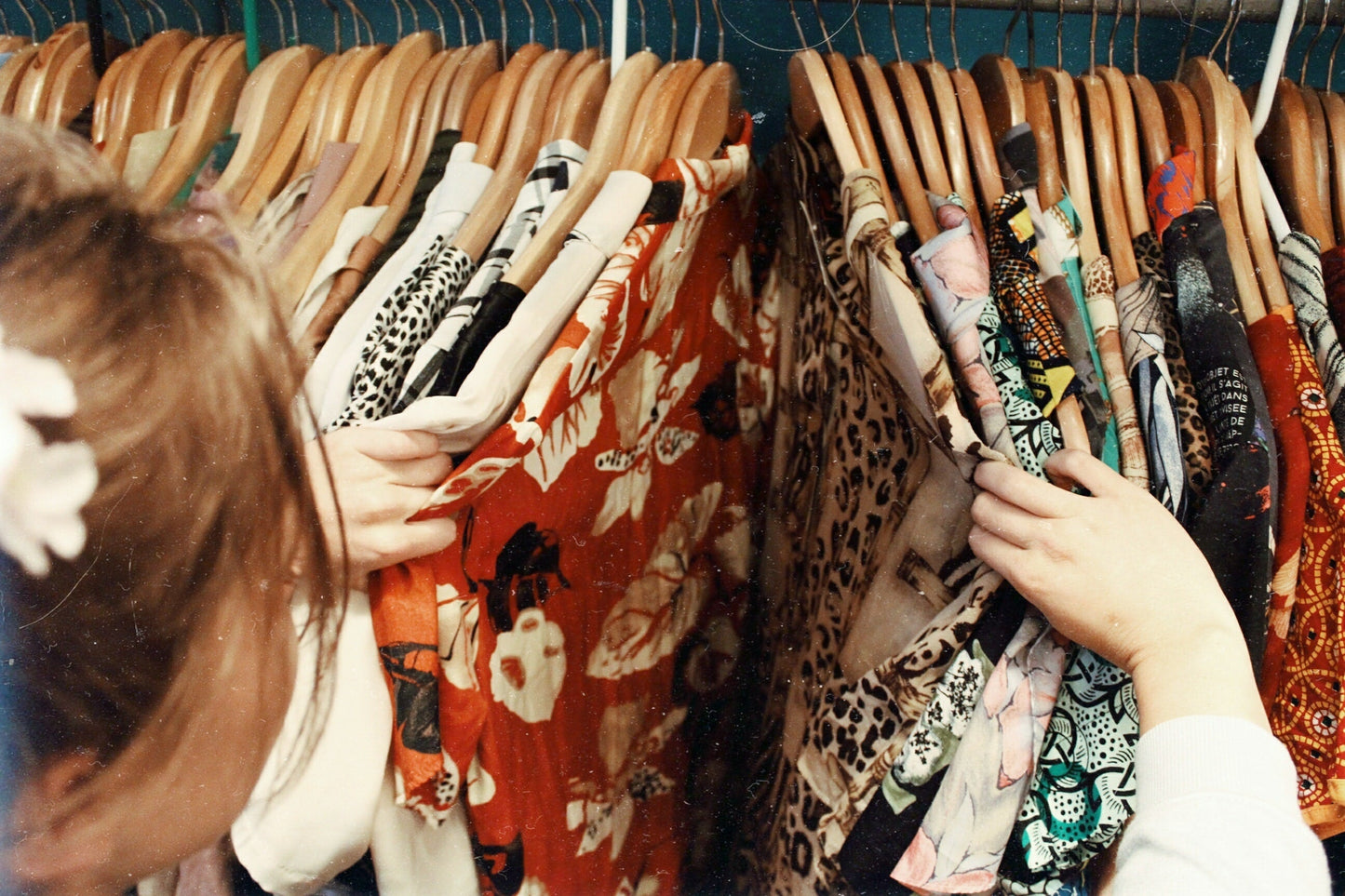
Fast fashion is a choice that many consumers do unconsciously. At Art Andina, we believe that purchasing power is a strong power and that this power changes with information and consciousness.
What is the definition of fast fashion?
“Fast fashion” can be described as clothing that has a short production model and can go very quickly from the design stage to the stores in order to follow the latest (and ever-changing) trends. Fast fashion is also usually very inexpensive.
Without realizing it, you might be consuming fast fashion. Have you ever shopped at H&M or Zara? Forever21 or even Uniqlo?
Those fast fashion examples are part of many others, which we sometimes don’t realize are actually following this toxic business model.
When did fast fashion start?
The concept of new and seasonal trends to follow started in the 1960s when buying became a hobby rather than a necessity. But the term “fast fashion” was first used and read in the New York Times in the 1990s, after Zara implemented a faster production model with decreased time between the design stage and the clothing store.
The idea was to get inspiration from the latest Fashion Week and provide the general population with an affordable and extremely cost-efficient piece of clothing in the shortest amount of time possible, to beat the competition.

But why and how is fast fashion bad?
How is fast fashion ruining the environment?
In short, fast fashion is slowly killing our planet.
Producing enormous amounts of clothing at such low prices means using the cheapest materials in the fastest and easiest way possible. All of this adds up to clothing that won’t last, that will be thrown away and will contribute to the pollution of our water resources and oceans.
Cheap materials like polyester, nylon, and acrylic take hundreds of years to biodegrade and are made of microplastics that eventually end up in our wildlife.
The production of fast fashion also uses dyeing treatments and other chemicals that are contaminating freshwater resources in countries where they are so precious to the local populations.
How is fast fashion affecting humans?
It doesn’t stop here! It has been proven that those toxic chemicals are bad for your health and possibly your children’s health too. Substances like formaldehyde are resistant to repeated washing but can easily penetrate the skin.
Moreover, the psychological pressure and effect that fast fashion has on us cannot be ignored as well. Ever-changing trends and styles promote an overconsumption mentality. Just as aimlessly scrolling, looking for the next viral video to watch, constantly buying new clothes feed that instant gratification and dopamine addiction that most of us suffer from at some level.
And let’s talk about the most horrific issue: the exploitation of workers. Fast fashion is one of the prime responsible for modern-day slavery. Workshop workers often work in unsafe conditions, sometimes deadly, and are retributed with extremely low wages that are very far from being enough to survive. They don’t benefit from even the most fundamental human rights. Now, why in 2022, would situations like this still exist? The reason is that in order to save up and reduce costs as much as possible, big fast fashion brands outsource their work where protection of worker’s rights is virtually nonexistent and labor is cheap as ever.
Child labor may even be used in some cases.
Where does fast fashion happen the most?
In North America, an estimated 88% of the population prefers to buy in fast fashion stores, followed closely by Europe.
Recently, with the rapid rise of social media such as Youtube and Tiktok, a growing trend that has boomed on our screens is “unboxing” and “clothing hauls” videos. A big name that often comes out is Shein. As a result, this Chinese giant has now invaded thrift shops and secondhand outlets, which are drowning in Shein tags.
This, unfortunately, proves how fast trends die down and how we are unconsciously pushed to buy more and more, again and again.
Now more than ever, it is time to say goodbye to fast fashion and embrace slow fashion
Art Andina takes pride in being a small, independent, and human-sized company. We greatly value using ethically sourced materials, and we fully support fair trade: our craftsmen are fairly retributed for their hard work and have creative freedom on the designs, as we encourage them to keep their centuries-old cultural heritage alive.
Every collection is created in limited quantities, there is no overproduction and thus no waste of product. Their designs are also unique and limited, so you will have very little chance to see your alpaca blanket in your neighbor’s living room. Each piece is a one-of-a-kind work of art.
Now is your chance to make a change in our consumerist world, and reverse the trend of fast fashion. Are you in to embrace slow fashion?
Stay tuned for our next blog with valuable tips on avoiding fast fashion in the upcoming holiday season and supporting sustainable business!
